
The dust has settled from Black Friday, from the door-busting deals and bursting inboxes of coupons to the parking lots full of cars. The numbers are in, and what we found might just come as a surprise.
First, a bit of conventional wisdom. As noted in this space earlier in the week, foot traffic in U.S. stores — as measured over Thanksgiving and Black Friday — was down year over year. Data from sources such as RetailNext found that this traffic was off mid-to-high single-digit percentage points year over year, while internet sales over the same span were up 26 percent.
Those were headline numbers and stories. By way of shorthand: Brick-and-mortar locations suffered at the hands of eCommerce. If going only by first glance, this brief version of Black Friday would be all one needs to know. The problem with conventional wisdom, though, is that it is just so, well, conventional.
Do a little digging — as we did — and some numbers stand out. That’s because, even though the movement to shop online is an inexorable one, there exists no shortage of interest in pounding the pavement in search of shopping deals — at least for those who bothered to shop at all.
Not Buying Into It At All
Herein, then, lies a surprise, perhaps. PYMNTS queried more than 1,100 shoppers the day after Black Friday to see who bought what, where, when and why … and, of course, how. Of the responses (spanning men and women, millennials and older folks, with pocketbooks flush and not so flush), it turns out not everyone crowded retailers’ doors or online portals.
During Black Friday, just over 61 percent of people made a purchase, whether online or in-store. That, of course, leaves roughly 39 percent who opted to stay away from retailers and stay off the keyboard.
Might a turkey hangover have been the cause?
Seventy percent of those who did not make a purchase stayed home, skewing toward a younger age, with 82 percent between the ages of 35 and 44. A bit more than 11 percent visited family. Of those who do not work, about 10 percent said they needed to work (to buy things) as a reason for not shopping on Black Friday. As noted by 56 percent of respondents, crowded stores were the most frequently cited reason for not buying anything.
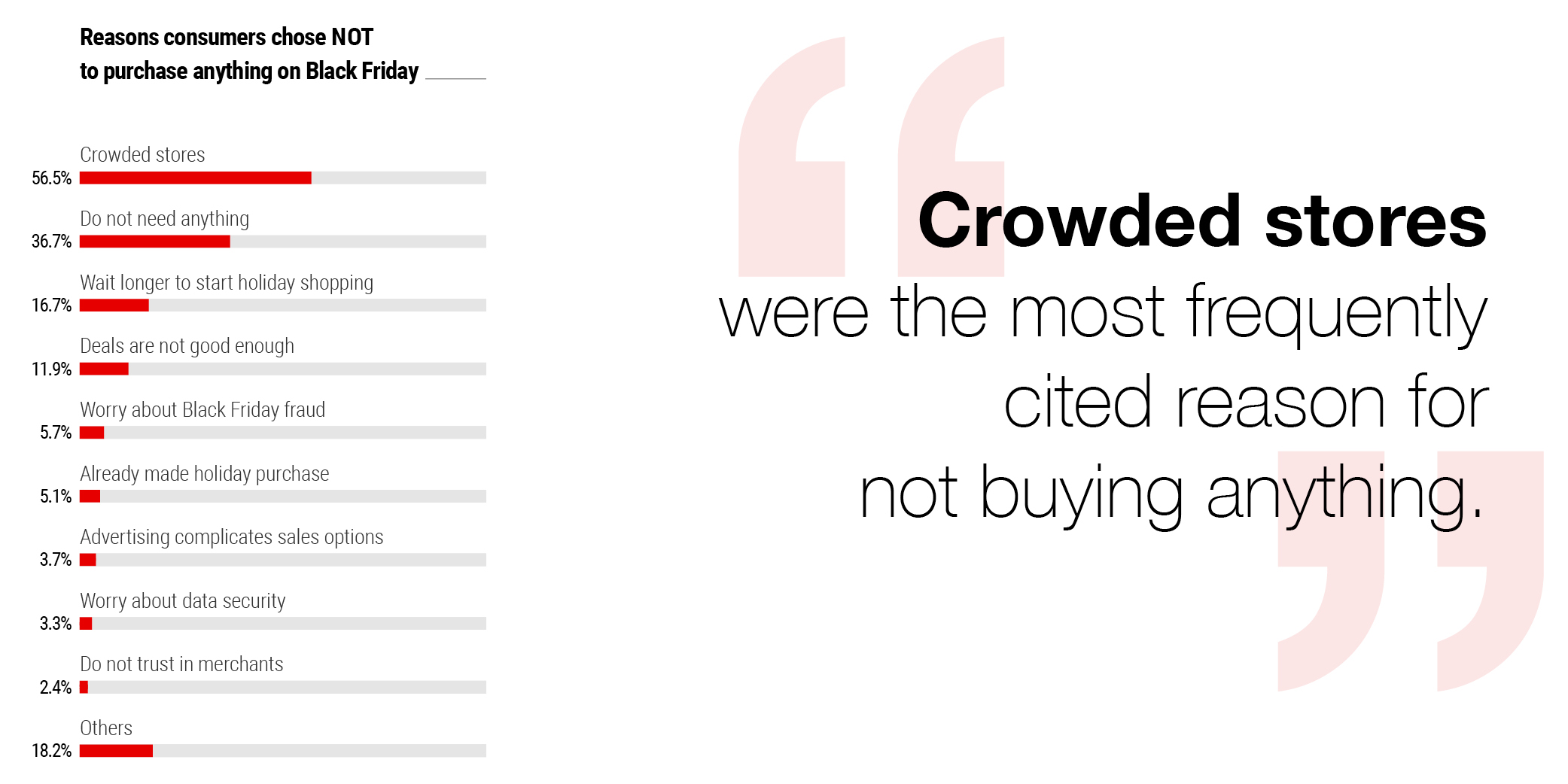 The not-buying (at least, not right now) seems an ingrained habit, as PYMNTS found that a full 29 percent of respondents never buy on Black Friday. Here, demographics show a bit of an age skew, as roughly 62 percent of people aged 65 or older either never shop on that date or they last did so five or more years ago.
The not-buying (at least, not right now) seems an ingrained habit, as PYMNTS found that a full 29 percent of respondents never buy on Black Friday. Here, demographics show a bit of an age skew, as roughly 62 percent of people aged 65 or older either never shop on that date or they last did so five or more years ago.
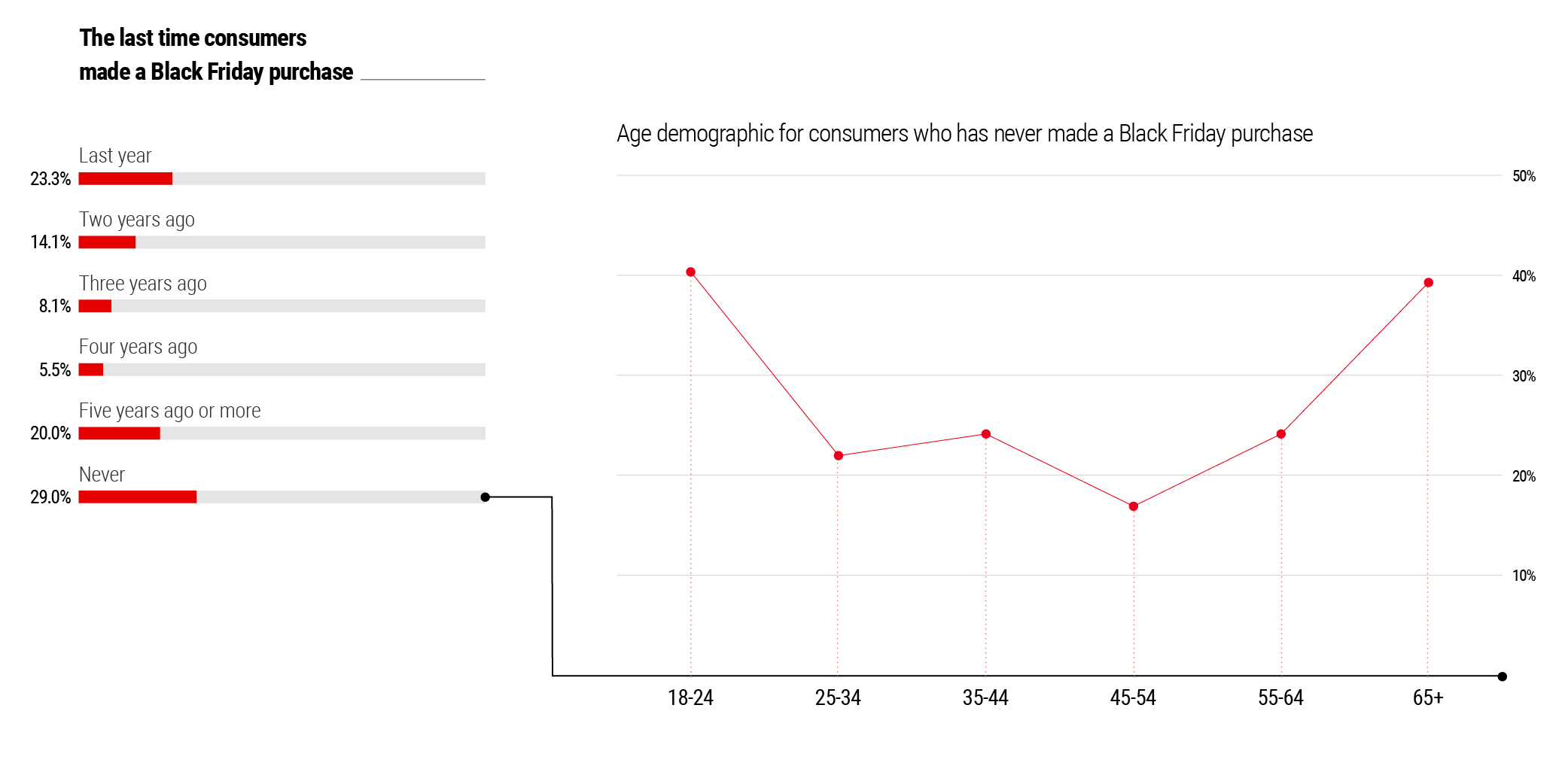 All told, the non-buyers seem to be saving up their financial firepower for the current holiday shopping season.
All told, the non-buyers seem to be saving up their financial firepower for the current holiday shopping season.
Nearly 79 percent of shoppers who don’t buy on Black Friday, but usually buy presents for others, do so right about now. The average that they spend during the holiday season comes to about $509.
Time, of course, will tell whether wallets open during the more traditional holiday season, and whether retailers’ top lines will be merry.
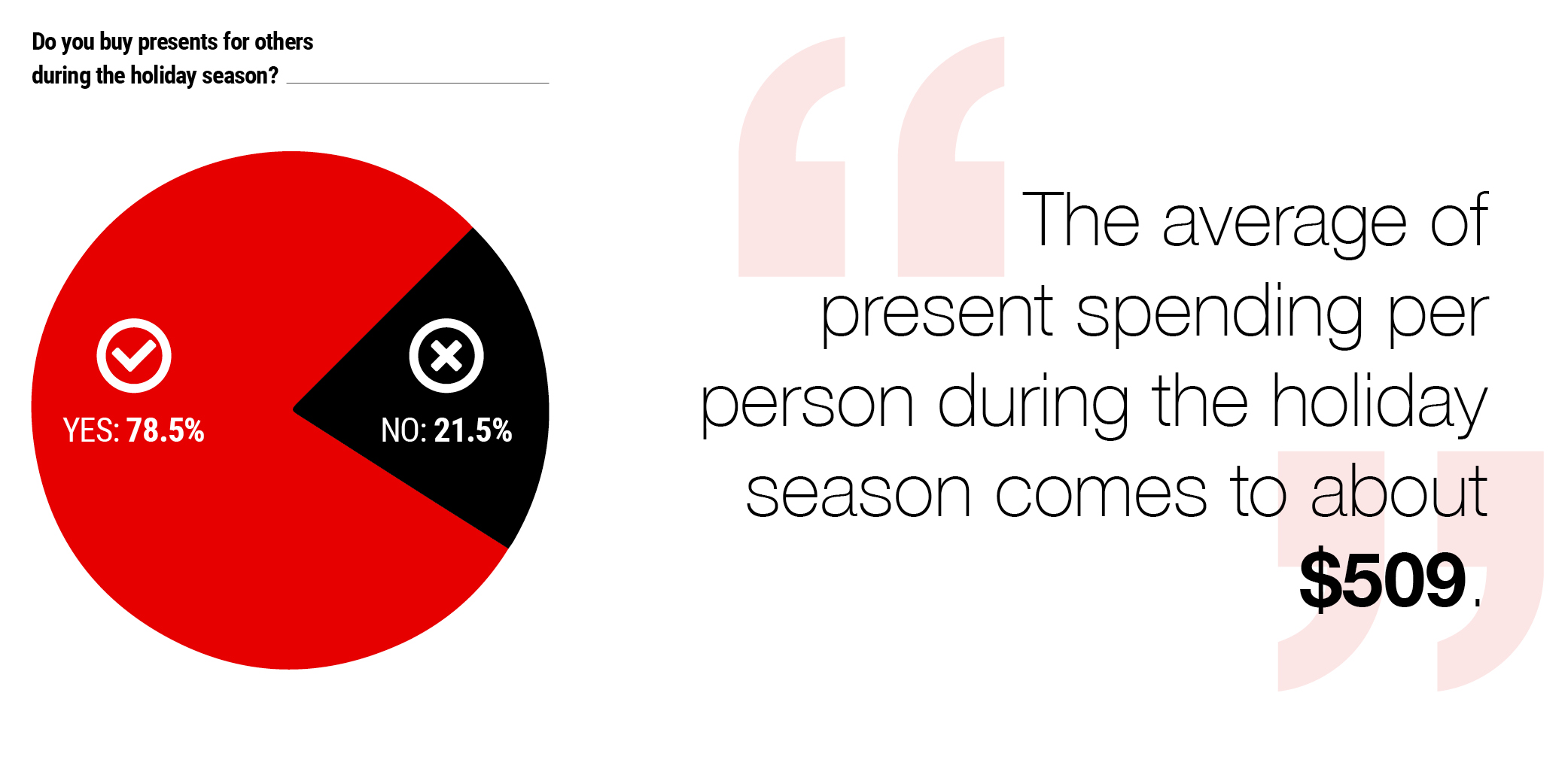 Those Who Do Buy, Buy Much — Early And For Others
Those Who Do Buy, Buy Much — Early And For Others
For those who did indeed buy on Black Friday, people seemed to set their alarms early to get going online and in lines. In terms of brick-and-mortar stores, roughly a third of respondents waited in line before the store opened so they could get something into their baskets before quantities sold out. The bulk of these hardy souls spanned the ages of 25 to 44 (we’ll assume they lugged a thermos or two along with them), and they most often bought clothing or electronics. Perhaps not surprisingly, Walmart was the winner here, where 56 percent of respondents made the pilgrimage.
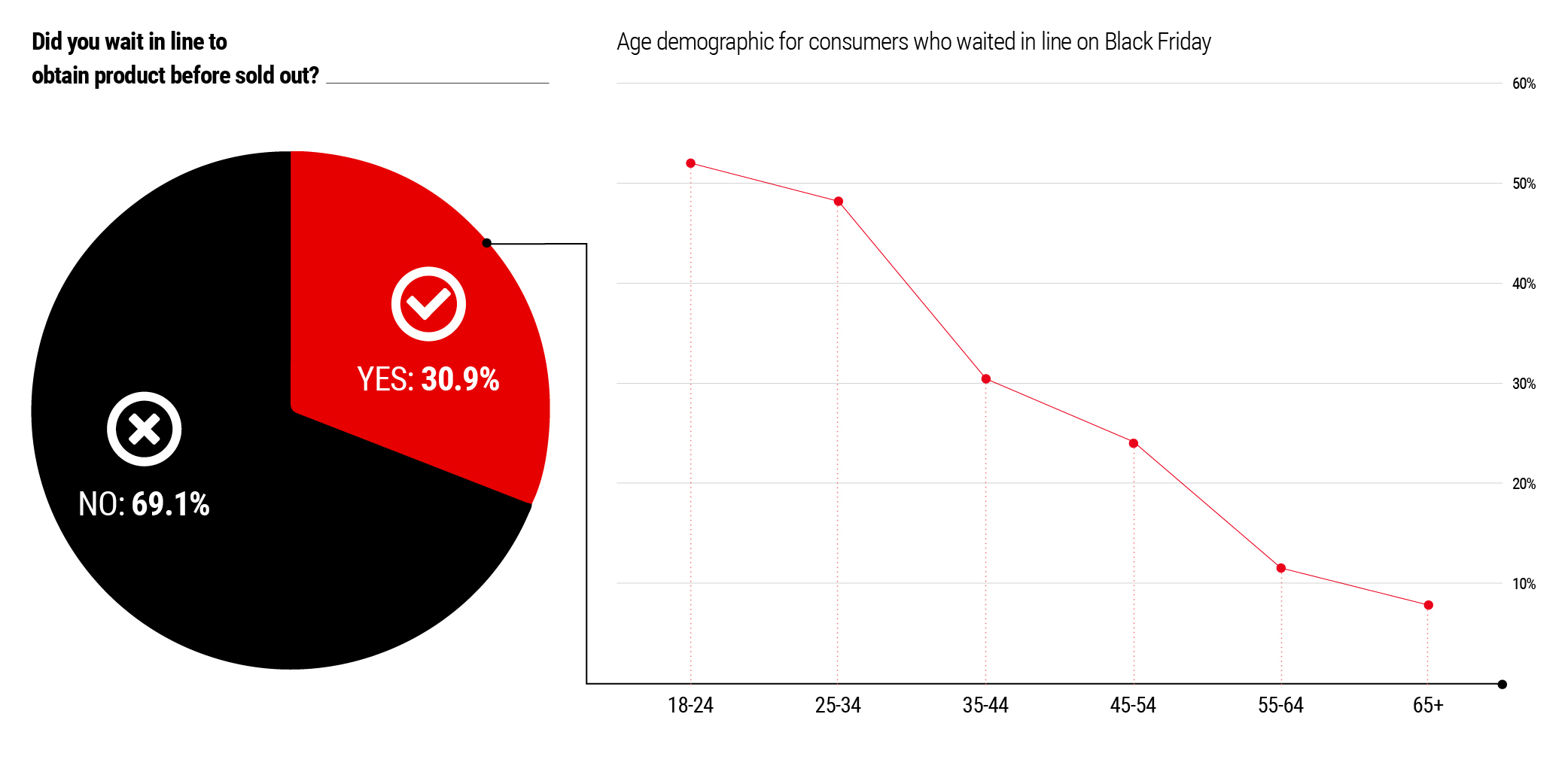 Don’t think the virtual rooster didn’t crow for those making their buys with clicks rather than at bricks. About one-third of online shoppers woke up early to make sure online items were not out of stock. Again, youth favored the morning hours to make their buys, as roughly three quarters of buyers between the ages of 18 and 24 woke up early to buy.
Don’t think the virtual rooster didn’t crow for those making their buys with clicks rather than at bricks. About one-third of online shoppers woke up early to make sure online items were not out of stock. Again, youth favored the morning hours to make their buys, as roughly three quarters of buyers between the ages of 18 and 24 woke up early to buy.
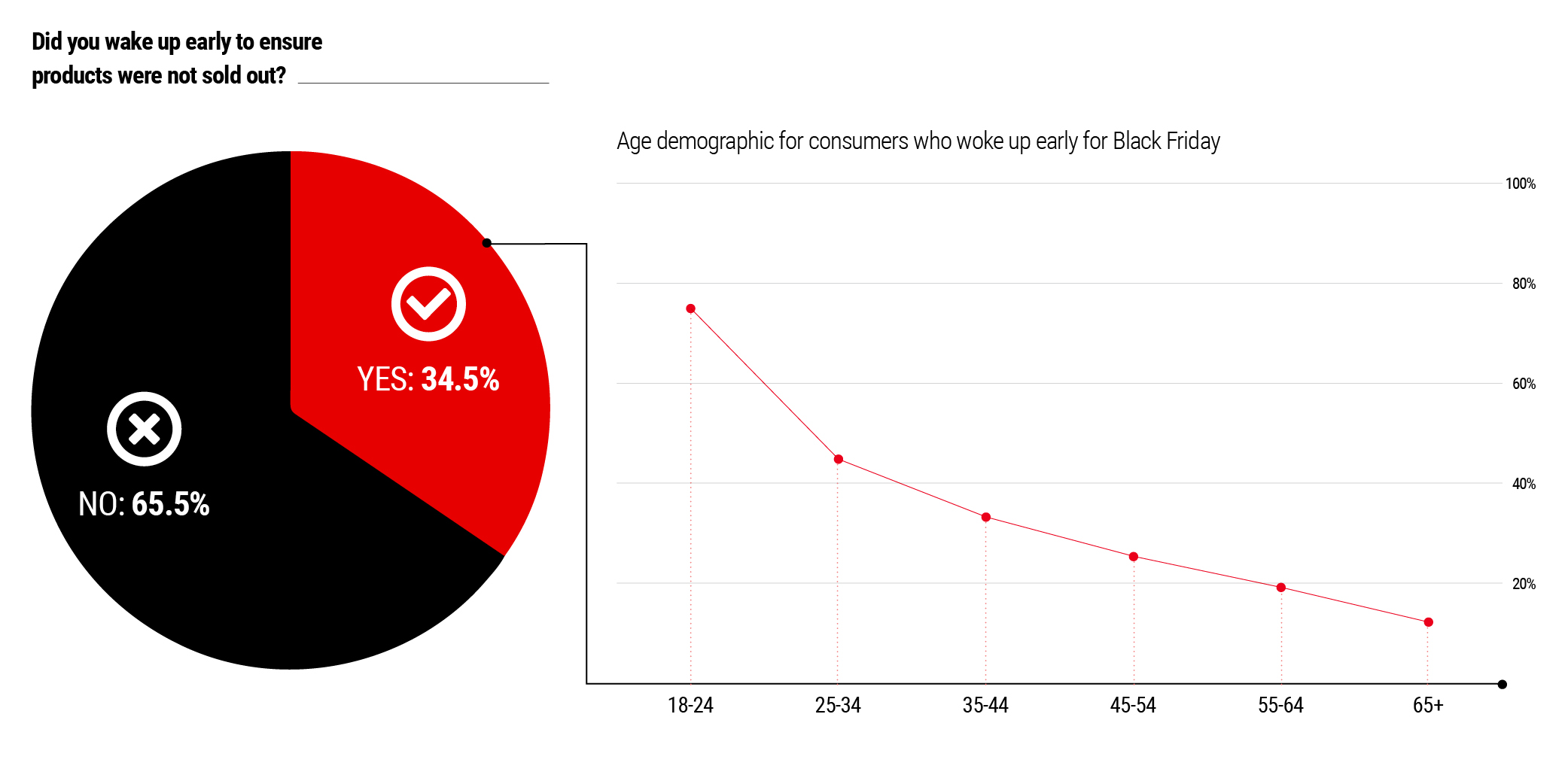
Similar to those who bought in-store, clothing and apparel dominated online buying. In this case, another marquee name gathered the bulk of spend: Amazon, which gained the attention of 65 percent of buyers. Walmart’s continued eCommerce growth, detailed in these pages often, seemed to be reflected in the Black Friday survey, too. Amazon’s eCommerce rival was among the top-three destinations for online spending at 31 percent.
Convenience dominated the reasons for online shopping, no matter who owned the site, cited as the top reason by 78 percent of shoppers.
The gift-giving spirit seemed to kick in early. When asked what percentage of their online spend was for others, the bulk of respondents said they bought with gifting in mind. Only 14 percent of online spending was solely for the individual making the purchase, while 12 percent of brick-and-mortar visitors did not buy for others.
Ambidextrous And Omnichannel, Demographics Mean A Lot
Roughly 28 percent of people purchased items using both online and in-store methods. Furthermore, we found the higher the income, the higher the likelihood that folks would be truly omnichannel on Black Friday. The power of the purse/wallet held sway here, as those who embraced both spent more than $600 — leagues above the $200-plus that had been spent by shoppers who opted for either online or in-store, but not both.
So far, we’ve discussed where the spending was done, when and for whom. How about the how of the matter?
Credit cards were top of mind and top of wallet on Black Friday, as credit cards showed to be the most popular payment method at 40 percent in-store and 66 percent online, with debit cards a respective 37 percent and 30 percent. Cash at the counter (you know, the tangible kind) stood out as important in-store, and was the payment method 38 percent of the time.
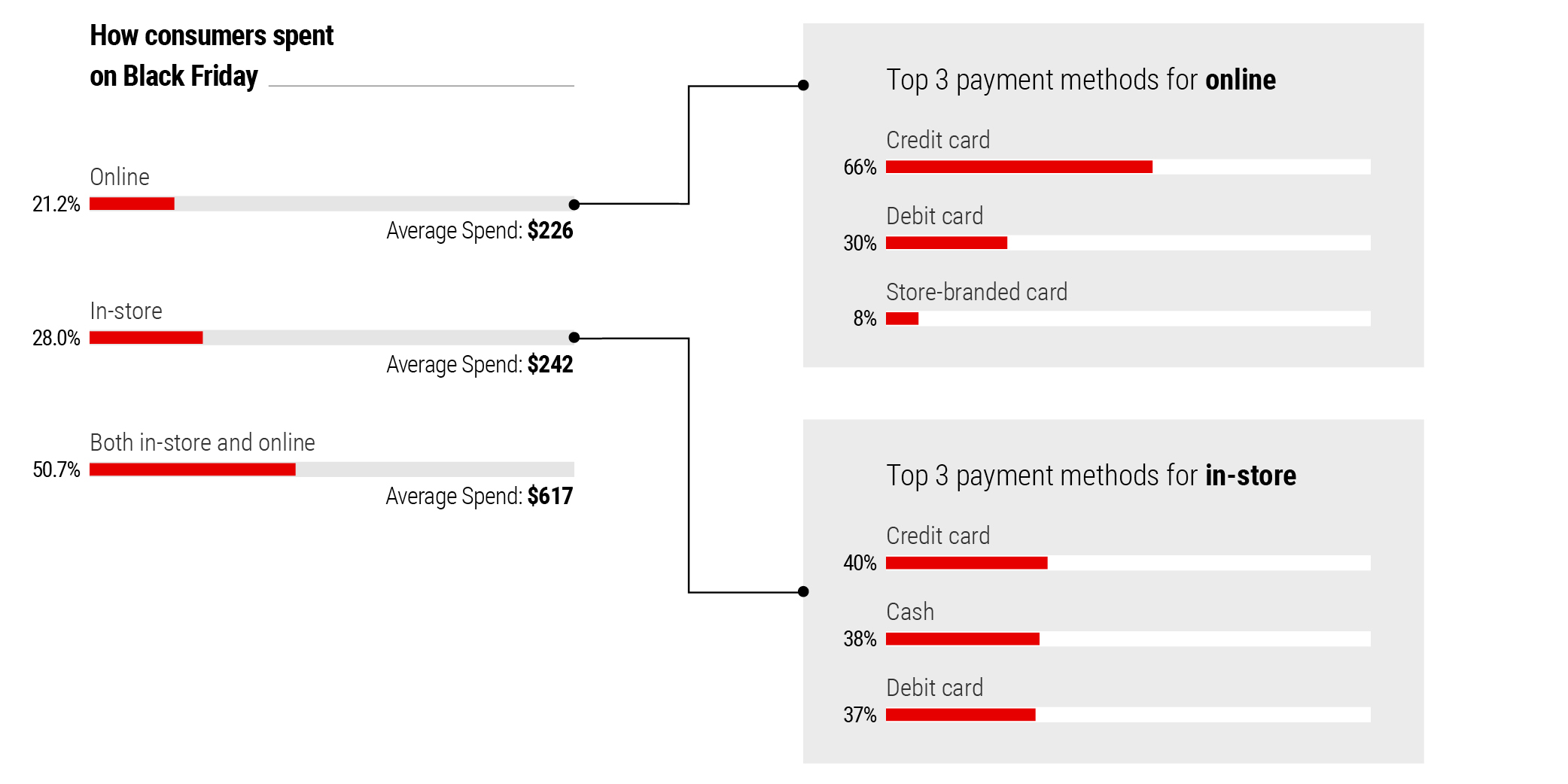 The folks wielding the cards and cash seemed to be bifurcated along relationship and family lines. Consider the fact that, when buying only in-store, couples with or without children were the top groups at 50 percent, followed by single people without children at 44 percent.
The folks wielding the cards and cash seemed to be bifurcated along relationship and family lines. Consider the fact that, when buying only in-store, couples with or without children were the top groups at 50 percent, followed by single people without children at 44 percent.
When buying by bits and bytes, those married without children purchased most often online at 41 percent. While getting granular, women were more likely to buy solely online (60 percent versus 40 percent). Single folks with children — and we imagine they are a bit harried — were most likely to stay home.
As Black Friday fades in the rearview mirror, consider it only a breather before the real (shopping) race is run.